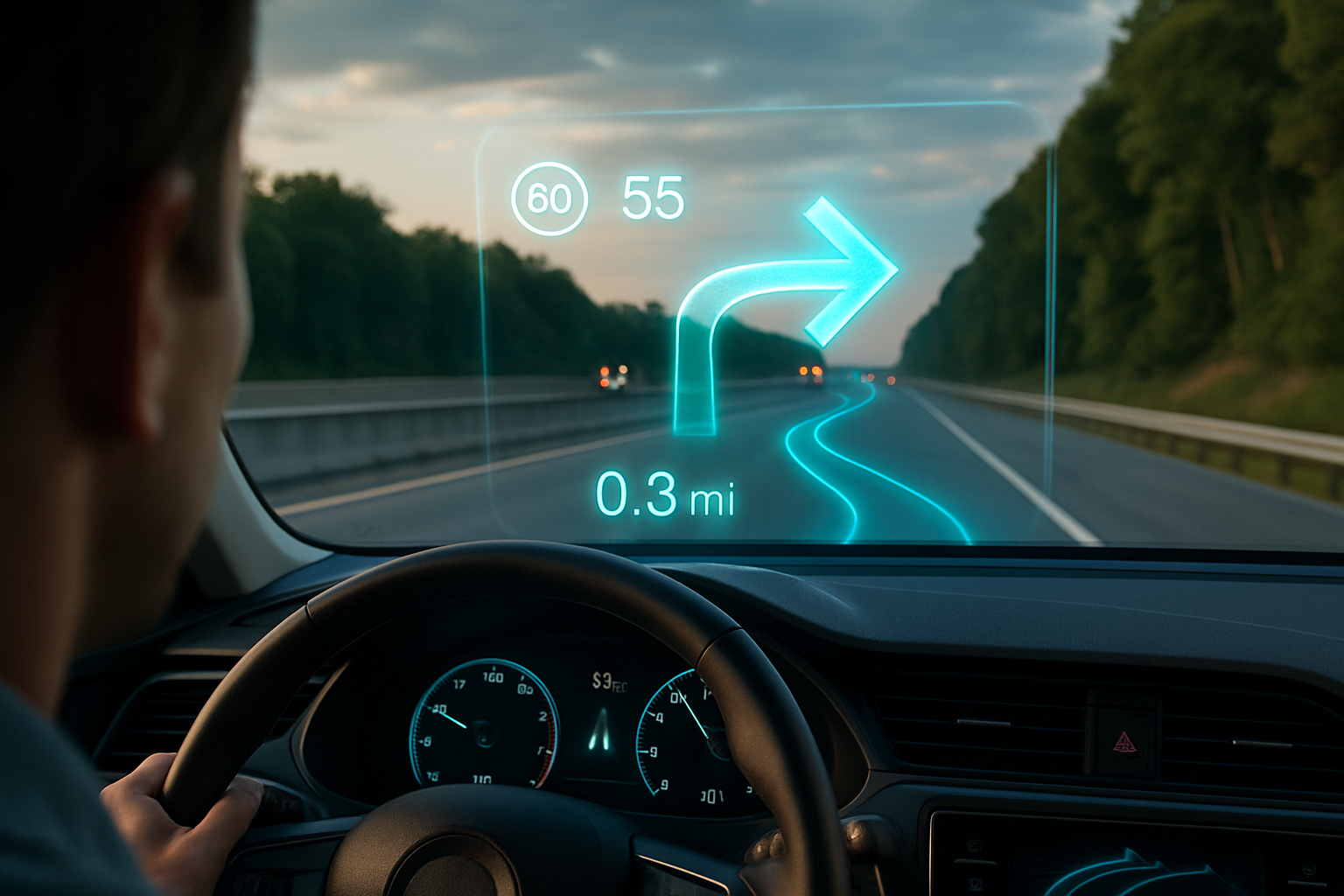Holographic Displays: The Future of Car Dashboards
A futuristic journey through the windshield of tomorrow's vehicles, where traditional gauges and screens give way to floating, three-dimensional information displays. Imagine a world where your car's vital statistics hover in mid-air, adjusting to your line of sight and offering an unparalleled driving experience. This isn't science fiction—it's the cutting-edge technology of holographic displays, poised to revolutionize how we interact with our vehicles.

The concept of holographic displays isn’t entirely new—it has been a staple of science fiction for decades. However, recent advancements in optics, computing power, and miniaturization have brought this technology from the realm of imagination into practical reality. Automotive engineers and designers are now exploring ways to integrate these displays into the next generation of vehicles.
How Holographic Displays Work
At its core, a holographic display system uses a combination of lasers, mirrors, and specialized optical elements to create the illusion of a three-dimensional image floating in space. The system projects light onto a transparent surface, which then reflects it in a way that tricks the human eye into perceiving depth and dimensionality.
One of the key components in automotive holographic displays is the head-up display (HUD) technology, which has been in use for years. HUDs project information onto the windshield, allowing drivers to view essential data without taking their eyes off the road. Holographic displays take this concept further by adding depth and interactivity to the projected information.
Benefits of Holographic Dashboards
The advantages of holographic displays in vehicles extend far beyond their futuristic appeal. By presenting information in a three-dimensional space, these systems can convey more data without cluttering the driver’s view. This can lead to improved situational awareness and faster reaction times in critical situations.
Moreover, holographic displays can be customized to individual driver preferences. Information can be arranged in layers, with the most crucial data appearing closer to the driver’s line of sight. This personalization extends to passenger experiences as well, with the potential for individualized displays visible from different seating positions.
Challenges and Hurdles
While the potential of holographic displays is immense, several challenges must be overcome before widespread adoption. One of the primary concerns is ensuring the visibility of holographic projections under various lighting conditions. Bright sunlight, for instance, can wash out traditional projections, making them difficult to see.
Another significant hurdle is the need for precise eye-tracking technology. For holographic displays to work effectively, the system must continuously adjust the projection based on the driver’s head position and eye movement. This requires sophisticated sensors and real-time processing capabilities.
Integration with Other Technologies
The true power of holographic displays lies in their potential to integrate with other emerging automotive technologies. When combined with augmented reality (AR) systems, holographic displays could overlay navigational information directly onto the road ahead, highlighting potential hazards or points of interest.
Furthermore, as vehicles become more connected and autonomous, holographic displays could serve as the primary interface for interacting with the car’s AI systems. Gesture controls and voice commands could manipulate the holographic elements, creating a truly immersive and intuitive driving experience.
The Road Ahead
As with any emerging technology, the path to widespread adoption of holographic displays in vehicles is not without its bumps. However, the potential benefits in terms of safety, convenience, and user experience are driving rapid development in this field.
Several major automakers and tech companies are investing heavily in holographic display technology. While mass-market implementation may still be a few years away, concept cars featuring these displays are already making appearances at auto shows around the world, giving us a tantalizing glimpse of what’s to come.
Implications for the Automotive Industry
The advent of holographic displays has far-reaching implications for the automotive industry as a whole. Interior designers will need to rethink cabin layouts to accommodate these new systems, potentially leading to more spacious and minimalist interiors. The shift towards digital displays may also impact the manufacturing process, as traditional gauge clusters and infotainment screens become obsolete.
Furthermore, the integration of holographic technology could spark new partnerships between automakers and tech companies, blurring the lines between the automotive and technology sectors even further. This convergence could accelerate innovation and lead to entirely new categories of in-vehicle experiences.
Conclusion
Holographic displays represent a paradigm shift in how we interact with our vehicles. By presenting information in a more intuitive and immersive manner, these systems have the potential to enhance safety, convenience, and the overall driving experience. As the technology continues to evolve and overcome current limitations, we can expect to see holographic dashboards become a standard feature in vehicles of the future.
The journey from science fiction to reality is well underway, and the road ahead for holographic displays in automobiles looks bright. As drivers, we can look forward to a future where the line between the physical and digital worlds blurs, creating a truly next-generation driving experience. The holographic dashboard is not just a technological advancement; it’s a window into the future of automotive design and human-machine interaction.




